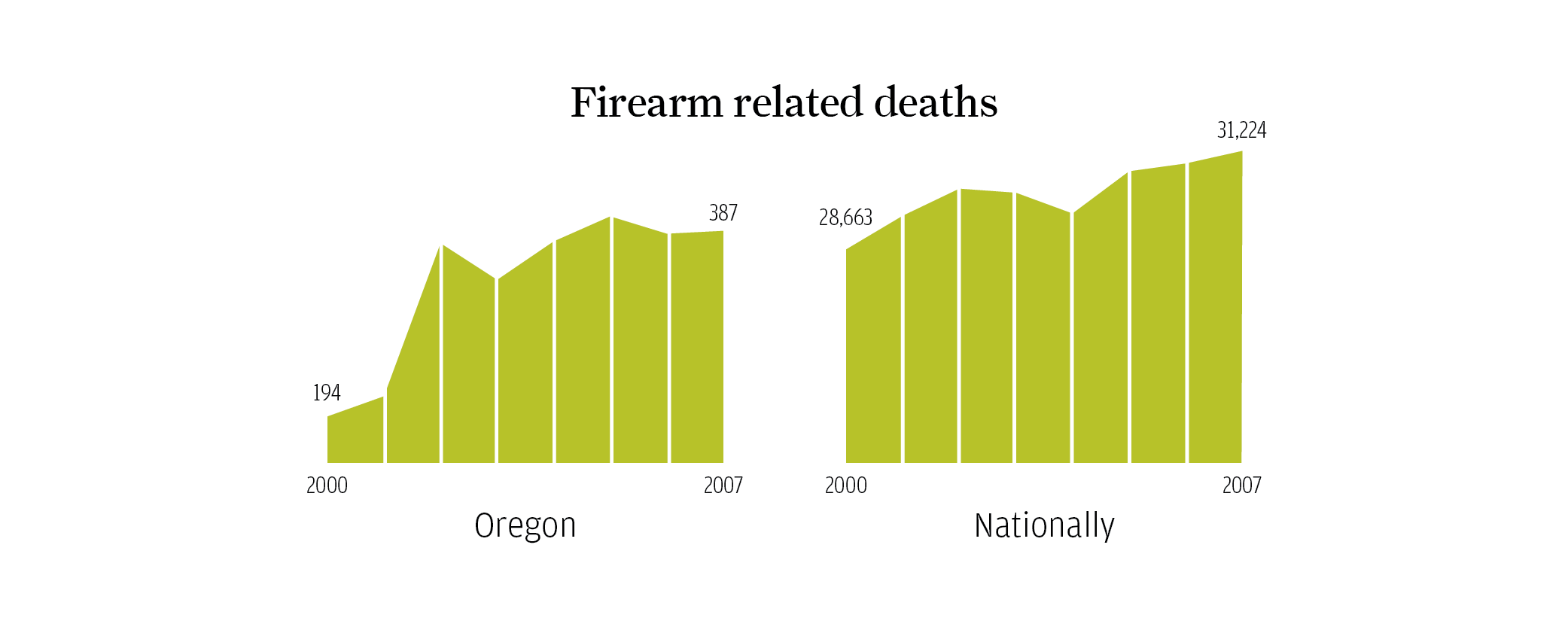Daniel Bernstine never expected to work in the president’s office for 10 years, but he stayed on because of his role in the university’s growth.
Looking to the future
The series:
In his 10 years at Portland State, President Daniel O. Bernstine has seen highs and lows, controversies and successes. He has increased enrollment, raised hundreds of millions of dollars and lead PSU through numerous budget crises. He has also been the subject of criticism for a seemingly distant nature, risk taking and time spent away from campus.
He is a salesman, an entrepreneur and an advocate. Like Portland State itself, Bernstine is many things to many people.
And in two months he will be gone.
After almost leaving PSU to be president at West Virginia University a month ago, Bernstine surprised many by dropping from that race and accepting the position of CEO and president of the Law School Admissions Council in Newtown, Pa.Today:
In the second five years of his tenure at Portland State, Bernstine helped a little-konwn school become the largest universtiy in Oregon. Having secured sizable donations and an international presence, Bernstine now moves on.
Daniel Bernstine never expected to work in the president’s office for 10 years, but he stayed on because of his role in the university’s growth.
In just the past five years, Bernstine has seen the successful conclusion of the university’s first major fundraiser and two of the largest donations in school history, has guided PSU toward being a sustainable campus, and has traveled the world to promote the university and bring international students to the Park Blocks.
But Bernstine, who has accepted a job at the Law School Admissions Council in Newton, Pa., said that now is the time for him to move on, while the university is in “mid-cycle.”
“Ten years is good. It’s a point where you have to take toll of the situation, where you are, where the institution is. You have to decide if you want to be around for another cycle,” Bernstine said.
With the completion of the university’s seven-year, $114 million fundraising campaign in 2006 and the recent rebranding effort, Bernstine said he had to decide whether or not to “re-enlist” for another five-to-seven years and another cycle of fundraising and marketing Portland State.
“You’re always in that cycle,” he said. “Frankly, I’m 59 and if I’m going to do something new, it’s probably a good time age-wise.”
That “something new” is a job as president and CEO of the Law School Admissions Council, a nonprofit group that administers the general Law School Admissions Test (the LSAT) to students who hope to attend one of the council’s 200 member law schools.
It’s a job Bernstine has been eyeing for some time, and one that doesn’t open up often. When a headhunter called him a few months ago to offer an interview, unlike many other calls Bernstine said he’s gotten over the years, he listened.
“My predecessor was there 12 years,” he said. “The fact that it was available, it probably wouldn’t be available for another 10 years. It’s a chance for me to learn a new language, the language of testing.”
Bernstine is already fluent in the language of administrative politics, a skill proven necessary during the last five years–a tumultuous period of rapid growth, budget cuts, spendy capital construction projects and the university’s move toward a sustainable campus.
The second half of Bernstine’s tenure at PSU began with a rocky start, as the university faced a $14.9 million deficit in early 2003. On January 17 that year, Bernstine went before over 300 faculty and staff and announced that layoffs were inevitable.
Budget deficits would remain a fact of life for the remainder of Bernstine’s tenure. PSU came to expect less and less state support, forcing Bernstine to step up fundraising efforts and outreach to international students. Bernstine also became an “active, effective spokesperson” for PSU in Salem, according to OUS Chancellor George Pernsteiner.
Just after Bernstine announced that layoffs were imminent, PSU received $2.5 million in grant money from Intel co-founder Gordon Moore, which enabled the university to start construction on a new computer science and engineering building.
A little over a year later, Dr. Fariborz Maseeh donated $8 million, the largest private donation in university history, to finish construction of the Engineering Building on Fourth Avenue, which houses the Fariborz Maseeh College of Engineering and Computer Science.
During his tenure Bernstine has overseen numerous capital construction projects in addition to the Maseeh College, including the Urban Center Plaza, the multiuse Broadway Building, the Native American Center, and Stephen Epler Hall, a residence hall with class space.
All of the buildings constructed during Bernstine’s time at PSU incorporate sustainability in some way, from the energy- and water-efficient Engineering Building to the eco-roof on the Broadway Building.
“PSU has built more buildings in his time than any other president,” said Pernsteiner, vice president under Bernstine until 2002. “This is a testament to his ability. He was able to build the institution to the point where it commands respect.”
Bernstine has also spent the last five years reaching out to the international community. After trips to Europe, Japan, South Africa and Botswana, Bernstine garnered criticism back home, where faculty members were beginning to question Bernstine’s active travel itinerary.
In a 2006 Vanguard article, he defended the importance of traveling by pointing out that PSU had seen international students increase from 1,000 in recent years to 1,400 in 2006.
“The pressure to be external is really pretty significant,” he said. “It’s not that you ignore the institution. You have to put the infrastructure in place that allows you to be away from the office.”
Perhaps the most criticism Bernstine has endured the past five years centers on his decision in 2004 to enter Portland State into a contract with Connecticut-based Higher One, the now infamous provider of university ID cards that double as a debit card.
Students were enraged that Bernstine signed the school into a contract without first consulting the student body. The Associated Students of Portland State University (ASPSU) staged a boycott, which culminated with 200 students storming into Bernstine’s office to demand he break the contract.
“Higher One was an example where we consulted students but we didn’t get a commitment from the formal administration of the student body, so it gave them an opportunity to latch on to something and it escalated,” Bernstine said.
“He’s done a good job of getting PSU known around the country or the world,” said Ryan Klute, an organizer of the Higher One boycott. “Ultimately his goal was to get PSU more respect. I think he’s made a great impact on this campus.”
Higher One wasn’t the first time Bernstine had scuffled with ASPSU. In 2006, Bernstine sent the student incidental fee budget back to the Student Fee Committee and requested that the committee re-examine certain budgets, saying the SFC hadn’t follow its guidelines for allocating funds.
Student leaders became upset when Bernstine imposed a deadline to re-examine the budget, saying he would reallocate the fee money according to the guidelines if the committee did not act.
“I have never second-guessed an SFC allocation. The only thing I say is, you have to follow your rules,” Bernstine said. “You can allocate the money any way you want, but you have to follow your procedure.”
Now the search for a new president must begin. Pernsteiner said that he hopes an Oregon University System search committee will have candidates to interview by the end of fall term.
“I think that’s a doable thing,” Pernsteiner said, adding that the committee will decide whether to hire a search consultant to aid the process.
Before a new president is hired, an interim president will most likely be appointed. The process of selecting that person has not begun and will be addressed at a May 4 OUS board meeting.
“Prior to Dan’s presidency, PSU was unheard of, in a way. It was part of his strategy to improve the image of the university and improve its effectiveness,” Pernsteiner said. “He had an opportunity and he seized it.”




